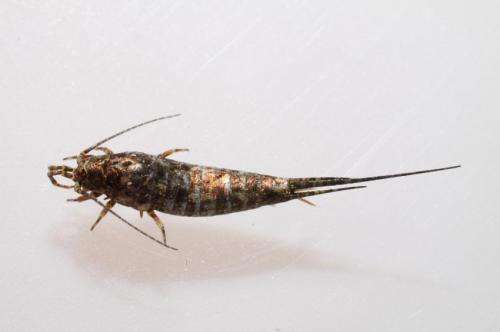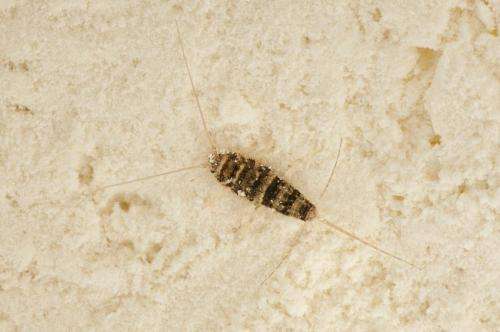The first insects were not yet able to smell well

An insect's sense of smell is vital to its survival. Only if it can trace even tiny amounts of odor molecules is it is able to find food sources, communicate with conspecifics, or avoid enemies. According to scientists at the Max Planck Institute for Chemical Ecology in Jena, Germany, many proteins involved in the highly sensitive odor perception of insects emerged rather late in the evolutionary process. The very complex olfactory system of modern insects is therefore not an adaptation to a terrestrial environment when ancient insects migrated from water to land, but rather an adaptation that appeared when insects developed the ability to fly. The results were published in the Open Access Journal eLife.
Many insect species employ three families of receptor proteins in order to perceive thousands of different environmental odors. Among them are the olfactory receptors. They form a functional complex with another protein, the so-called olfactory receptor co-receptor, which enables insects to smell the tiniest amounts of odor molecules in their environment very rapidly.
Crustaceans and insects share a common ancestor. Since crustaceans do not have olfactory receptors, previously scientists assumed that these receptors evolved as an adaptation of prehistoric insects to a terrestrial life. This hypothesis is also based on the assumption that for the ancestors of recent insects, the ability to detect odor molecules in the air rather than dissolved in water was of vital importance.

Early research on insect olfactory receptors focused entirely on insects with wings. Ewald Große-Wilde and Bill S. Hansson and their colleagues from the Max Planck Institute for Chemical Ecology in Jena, Germany, have now taken a closer look at the olfactory system of wingless insects, which − in evolutionary terms − are older than winged insects: the jumping bristletail Lepismachilis y-signata and the firebrat Thermobia domestica, which are both wingless, as well as the leaf insect Phyllium siccifolium, which is winged and was used as a control. As all three studied insect species emerged at different times in insect evolution, the scientists wanted to track the historical development of olfactory receptors.
Christine Mißbach, first author of the study, analyzed the active genes in the insect antennae where the olfactory receptors are located and describes her discovery this way: "Astonishingly, the firebrat, which is more closely related to flying insects, employs several co-receptors, while the odorant receptors themselves are absent."
However, the researchers did not find any evidence for an olfactory system which is based on odorant receptors in the most basal insect, the jumping bristletail.
"According to these findings, the receptor family which is important for olfaction in recent insects evolved long after the migration of insects from water to land," Ewald Große-Wilde summarizes. The researchers are convinced that the main olfactory receptors evolved independently of the co-receptor long after insects had adapted to terrestrial life. They hope that further analyses will reveal why some insect species have only co-receptors, no main receptors, and also clarify the function these co-receptors have on their own. [AO]
More information: Missbach, C., Dweck, H., Vogel, H., Vilcinskas, A., Stensmyr, M. C., Hansson, B. S., Grosse-Wilde, E. (2014). Evolution of insect olfactory receptors. eLIFE, DOI: 10.7554/elife.02115.
Journal information: eLife
Provided by Max Planck Society




















